 W
WAldersbach Abbey is a former Cistercian monastery in the community of Aldersbach in the district of Passau in the valley of the Vils, Lower Bavaria, Germany.
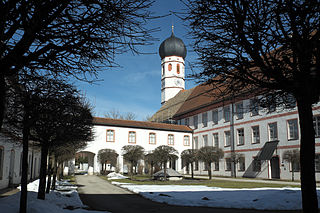 W
WBeuerberg Abbey, formerly a monastery of the Augustinian Canons, is now the Monastery of the Visitation, Beuerberg, a house of the Visitandines in Eurasburg in Bavaria, Germany.
 W
WBlankenburg (Harz) is a town and health resort in the district of Harz, in Saxony-Anhalt, Germany, at the north foot of the Harz Mountains, 12 miles (19 km) southwest of Halberstadt.
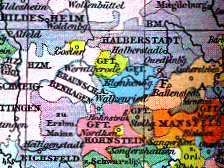 W
WThe County of Blankenburg was a state of the Holy Roman Empire. Its capital was Blankenburg, it was located in and near the Harz mountains.
 W
WThe County of Gorizia, from 1365 Princely County of Gorizia, was a State of the Holy Roman Empire. Originally mediate Vogts of the Patriarchs of Aquileia, the Counts of Gorizia (Meinhardiner) ruled over several fiefs in the area of Lienz and in the Friuli region of northeastern Italy with their residence at Gorizia (Görz).
 W
WEnsdorf Abbey was a house of the Benedictine Order located at Ensdorf in Bavaria in Germany.
 W
WFreiburg im Breisgau, commonly referred to as Freiburg, is an independent city in Baden-Württemberg, Germany. With a population of about 230,000, Freiburg is the fourth largest city in Baden-Württemberg after Stuttgart, Karlsruhe, and Mannheim. The population of the Freiburg metropolitan area was 656,753 in 2018. In the south-west of the country, it straddles the Dreisam river, at the foot of the Schlossberg. Historically, the city has acted as the hub of the Breisgau region on the western edge of the Black Forest in the Upper Rhine Plain. A famous old German university town, and archiepiscopal seat, Freiburg was incorporated in the early twelfth century and developed into a major commercial, intellectual, and ecclesiastical center of the upper Rhine region. The city is known for its medieval minster and Renaissance university, as well as for its high standard of living and advanced environmental practices. The city is situated in the heart of the major Baden wine-growing region and serves as the primary tourist entry point to the scenic beauty of the Black Forest. According to meteorological statistics, the city is the sunniest and warmest in Germany, and held the all-time German temperature record of 40.2 °C (104.4 °F) from 2003 to 2015.
 W
WHesborn is a village and a civil parish (Ortsteil) of the German town of Hallenberg, located in the Hochsauerlandkreis district in North Rhine-Westphalia. As of 2010 its population was of 1,060.
 W
WKamp Abbey, also known as Altenkamp Abbey or Alt(en)feld Abbey was the first Cistercian monastery founded in German territory, in the present town of Kamp-Lintfort in North Rhine-Westphalia.
 W
WLippe was a historical state in Germany, ruled by the House of Lippe. It was located between the Weser river and the southeast part of the Teutoburg Forest.
 W
WLippe was a historical state in Germany, ruled by the House of Lippe. It was located between the Weser river and the southeast part of the Teutoburg Forest.
 W
WMarienrode Priory is a Benedictine nunnery in Marienrode, a district of Hildesheim in Germany.
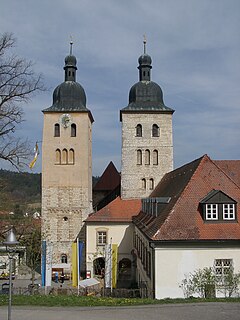 W
WPlankstetten Abbey is a monastery of the Benedictines located between Berching and Beilngries in Bavaria, Germany. It is a member of the Bavarian Congregation of the Benedictine Confederation.
 W
WThe prince-electors, or electors for short, were the members of the electoral college that elected the emperor of the Holy Roman Empire.
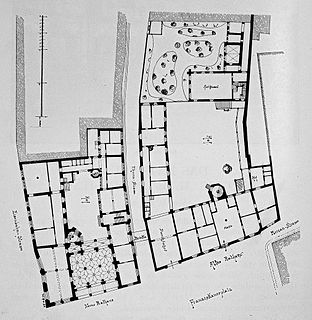 W
WThe town hall in Freiburg im Breisgau is spread over a total of 16 locations. The three most important buildings are the Old Town Hall and the New Town Hall in the city center as well as the Technical Town Hall in the Stühlinger district. The oldest town hall in Freiburg is part of the building complex of the Old Town Hall. It is located in the inner courtyard and is now called Gerichtslaube and is directly connected to the Old Town Hall. A passage from the New Town Hall to the Old Town Hall spans the Turmstraße between the two buildings. The three town halls form a complex, in which the three individual buildings are registered as monuments in the list of monuments of the country.
 W
WRot an der Rot Abbey was a Premonstratensian monastery in Rot an der Rot in Upper Swabia, Baden-Württemberg, Germany. It was the first Premonstratensian monastery in the whole of Swabia. The imposing structure of the former monastery is situated on a hill between the valleys of the rivers Rot and Haslach. The monastery church, dedicated to St Verena, and the convent buildings are an important part of the Upper Swabian Baroque Route. Apart from the actual monastic buildings, a number of other structures have been preserved among which are the gates and the economy building.
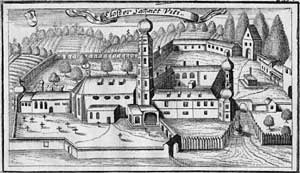 W
WSt. Vitus' Abbey on the Rott was a Benedictine monastery in the municipality of Neumarkt-Sankt Veit in the district of Mühldorf in Bavaria, Germany.
 W
WSolms is a town west of Wetzlar in the Lahn-Dill-Kreis, Hessen, Germany.
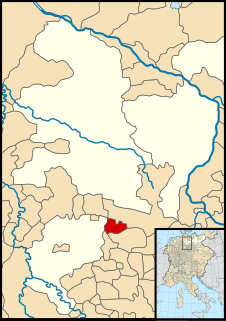 W
WThe County of Wernigerode was a state of the Holy Roman Empire which arose in the Harzgau region of the former Duchy of Saxony, at the northern foot of the Harz mountain range. The comital residence was at Wernigerode, now part of Saxony-Anhalt, Germany. The county was ruled by a branch of the House of Stolberg from 1429 until its mediatization to the Kingdom of Prussia in 1806. Nevertheless, the county remained in existence - with one short interruption - until the dissolution of the Kingdom of Prussia in 1918.